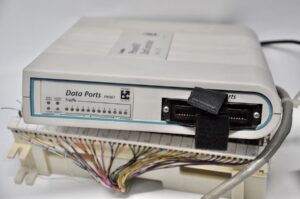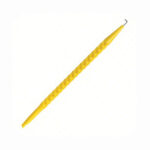How about a little layer 1 Friday combined with Netstalgia?
Back in the 1990’s I was doing desktop and light network support for a variety of very small clients in San Francisco, mostly advertising agencies. Ad agencies were experiencing a boom because of the dotcom era. VCs funneled money into dotcoms who funneled the money to advertising agencies. Then, they funneled the money into IT companies as they expanded and needed new computers, and so forth. This worked great until it all came crashing down.
One of my “largest” clients was an advertising agency with some major corporate clients. They had their own building on California Street, just up the hill from where Emperor Norton died, for those of you who know your San Francisco trivia. They had, perhaps, 200 users in that building, not big by my standards today, but big when you were used to companies with 15 or 20 people. My consulting company had an in-house consultant stationed there permanently, who happened to be a guy who happened to be a good friend of mine since high school. I was assigned there one day a week to help him out.
The network was designed to the highest of our standards. Rack-mounted hubs in IDFs on each floor, connecting into switches in the MDF on the entry level. (The guy who designed it also connected all servers to the switches instead of hubs, on the theory that switches “are faster”. Well, ok.) Because this was a heavy Mac shop, and it was still the days of AppleTalk, we had a Compatible Systems router providing WAN, Internet, and AppleTalk Zoning.

Not all of the Macs were Ethernet-capable, so we also had Farallon StarControllers in each closet. These were hubs for Farallon’s PhoneNet technology, an adaptation of Apple’s LocalTalk networking system that ran over a single pair of ordinary phone wires. (LocalTalk normally took fat serial cables that had to be daisy-chained.)
The structured wiring was truly beautiful. Our cabling vendor did a nice job of running everything neatly and carefully, all terminated on patch panels in the wiring closets. I had never seen anything like this before, being used to small offices where they slung cables over cubicle walls.
The StarControllers had a 50-pin cable, which then broke out and terminated onto an RJ11 patch panel. If a user was running LocalTalk, we’d simply patch them to the wall using a phone wire with RJ11 on both ends. In the wiring closet we’d then patch their location to the StarController patch panel. The wall jacks and the terminations in the wiring closet were RJ45, but you could still just plug an RJ11 into the port and it fit. It only used the center pair of wires, but it worked just fine.

Or so we thought. As time went on, more and more users got newer computers and converted over to Ethernet. We’d remove their RJ11s and patch them in with RJ45s. We started noticing odd behavior. Stations that had been on LocalTalk before would drop off the network randomly. We couldn’t figure out why.
I took a flashlight and looked into the patch panel jacks. It turned out that where the RJ11’s had been inserted, they had flattened out the outer RJ45 pins. Normally those pins, even if not in use, fit into a sort of slot in the connector. But the RJ11 only had four pins in it, not eight, so there was no slot on the outer edges of the connector. Those pins in the patch panel were being compressed by the plastic and eventually flattened to the point they couldn’t make a solid connection.

The correct solution? Call the cabling vendor and have them replace the patch panels. The easiest solution? Take a spudger and carefully pry those pins back up into position. Which one did we go with? Well, would you want to tell the customer you had ruined all their patch panels? Spudger it was! And it worked just fine. From then on we used RJ45-RJ11 custom patch cables for LocalTalk connections.

I’ve often mentioned my fondness for the early suite of Apple networking protocols, including PhoneNet. Many network engineers, even of my age group (which we won’t mention) never got to experience them because Apple was a very niche market back then. For all the talk about AI making networking turnkey and simple, Apple networks back in the 1990’s just worked. Unless you flattened the pins.
Nostalgia indeed. I entered networking field in my student days of Brandeis U. It was a hardcore Apple shop, or at least when people stopped using VMS and everyone connected using Localtalk, except everything was RJ11 and my very first network tool was a punchdown tool. Every once in a while, when using four software packages to get PC Localtalk cards working was not enough, we would do 10M over RJ11. It was perverse fun and FastPath meant something else. But “can you see zones” made life for help desk very easy. 🙂
I put a few PCs on LocalTalk… I think Farallon made a card for that. I can’t remember how well it worked, though, that was so long ago. Thanks for stopping by!